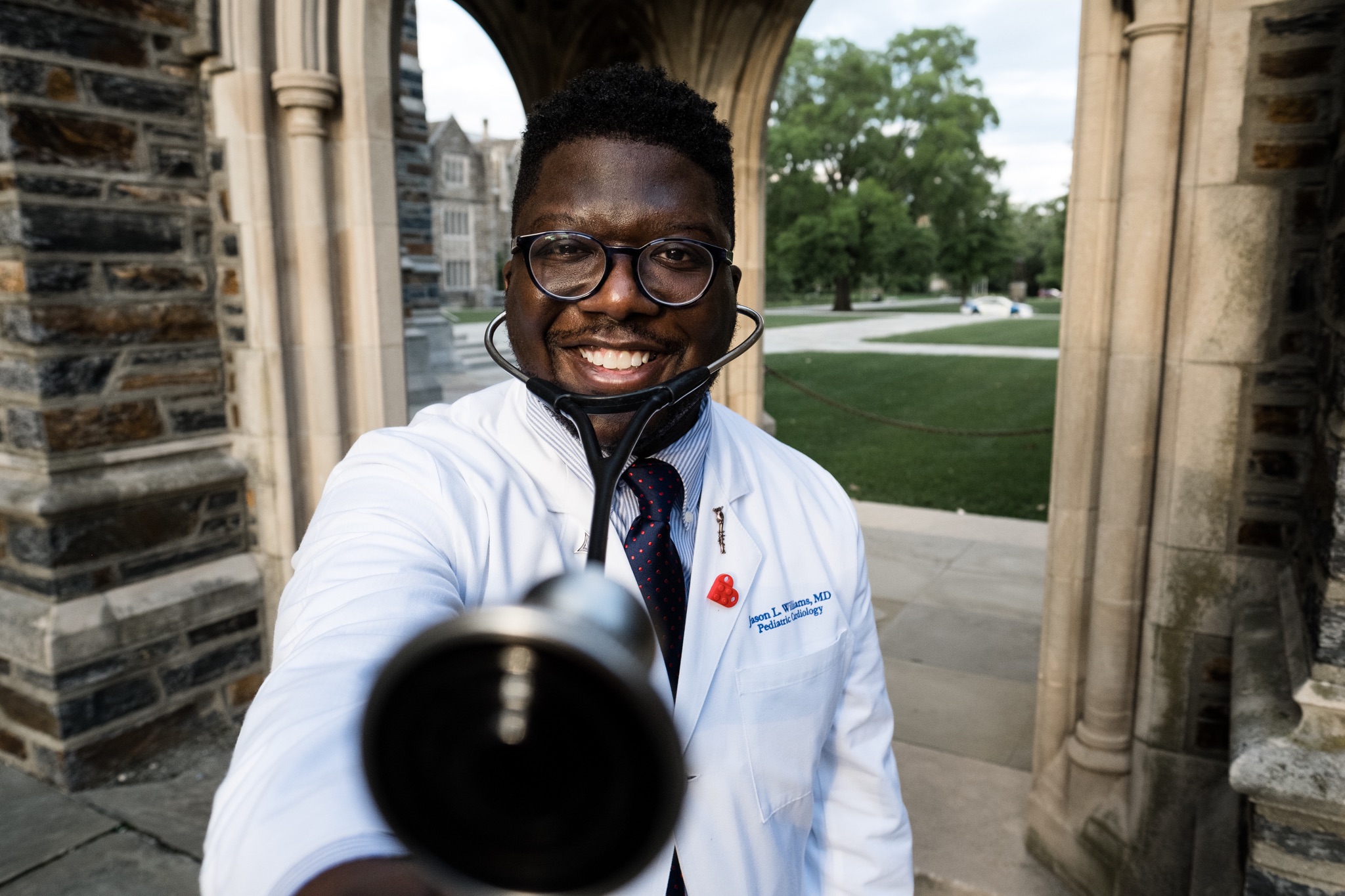Taking inequities to heart

Jason Williams ’09, a pediatric cardiologist, is completing an advanced non-invasive cardiac imaging fellowship this year.
Many studies have shown that Black children in the United States born with congenital heart defects have worse survival rates than Hispanic or white children, and that this disparity in survival has persisted through the years. Meanwhile, another alarming statistic is reflected among care providers: Less than 8 percent of all pediatric cardiologists in the United States are underrepresented minorities.
One Furman alumnus is directly helping to rectify those statistics. Jason Williams ’09 is spending a year as a fellow in advanced non-invasive cardiac imaging at Nationwide Children’s Hospital in Columbus, Ohio, learning to recognize heart defects even before birth.
“Part of the non-invasive curriculum is fetal imaging,” Williams says. There are more than 35 congenital heart diseases that affect the shape and function of a baby’s heart. The heart forms just a few weeks into pregnancy, and heart disease can be diagnosed between 18 and 20 weeks’ gestation by fetal ultrasound. If disease is identified, “We’re able to manage the mom and the baby along with the high-risk obstetrics team for the best possible outcome and continue care after the baby’s born,” Williams says.
Williams recently shared information about congenital heart disease as part of a national panel sponsored by the Cardiovascular Disease in Women and Children Committee of the Association of Black Cardiologists. Giving back is another step he takes to addressing inequities.
“The key to continuing the success of black physicians in the pipeline is, as you climb, to reach back and help someone else,” he says. “It wasn’t that long ago that some of your major medical schools were denying admission to African Americans.”
His medical school alma mater, the Medical University of South Carolina, did not graduate a Black medical student until 1971. Williams completed a pediatrics residency at Vanderbilt University Medical Center, which had its first black resident in 1967, and a fellowship in pediatric cardiology from Duke University Medical Center, which hired its first Black faculty physician in 1966.
“For me to be able to stand on the shoulders of giants and pave a career in pediatric cardiology is not by my own account but by teams of people who wanted to see change, and by my very own personal team who were diligent in sticking with me and making sure that I got here,” Williams says.
Williams applied to undergraduate school at Furman because of its success in getting students into medical school on their first attempt, which was about 70 percent when he was a first-year student in 2005.
“At Furman, I had a whole village who knew what I wanted to do,” Williams says. A biology major, he was paired with a student two years older, Emmanuel Chandler ’07, who also wanted to go to medical school. Chandler is now an adolescent medicine physician at Cincinnati Children’s Hospital Medical Center, and the two remain close friends. He mentions two former faculty members who supported his interests and kept him on track: Laura Thompson and Sandra Larson. Larson helped Williams secure a summer research position at the Centers for Disease Control and Prevention between his junior and senior years that, he says, helped him get into medical school.
Victoria Turgeon, professor of biology and neuroscience, did not teach Williams but she knew him. “Jason was one of those students who we all knew would achieve his goals,” she says.
Furman’s rigorous academics prepared Williams to succeed in medical school, he says, and it prepared him for addressing the multi-faceted, systemic racism issues that contribute to racial health inequities that he’ll try as a physician to heal.
“The larger social factors that have to deal with where Black people live, where we go to school, and where we play all have a big role in the development of preventable heart disease in adults and children,” Williams says.
After his year of training wraps up this summer, Williams is hoping to work in academic medicine, where he can continue research into defining health disparities and coming up with solutions on how we best tackle this “from a systems standpoint to provide better care for all patients.”